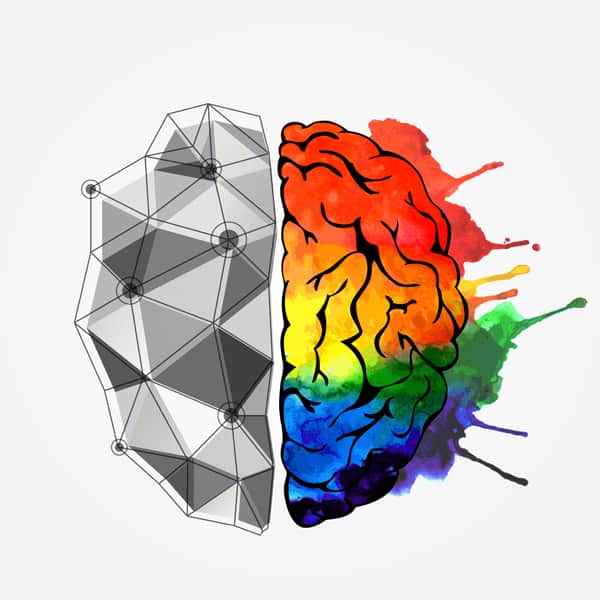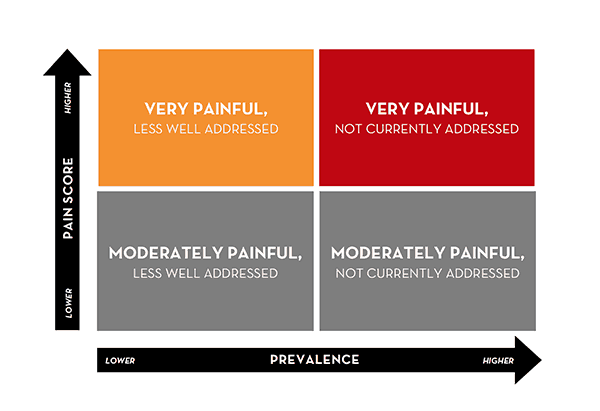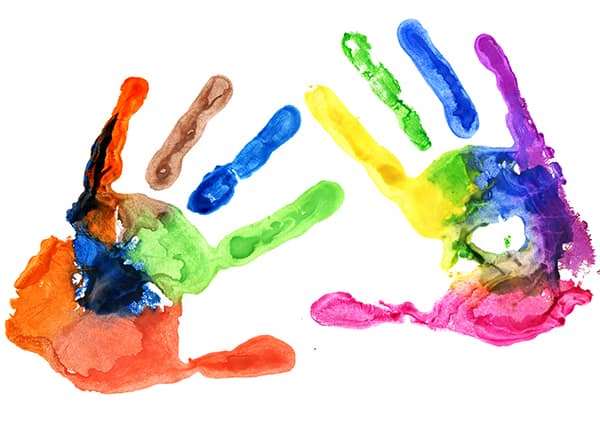Conquer Complex Problems with a Quantified Customer Experience Map.
One of the things that makes humans incredibly impressive is their ability to be both emotional and empirical — two sides of the same coin that when taken together, create an honest and truthful understanding of a person and their experiences. The right brain balancing the left brain. Structure and logic in the company of emotion and intuition.
Similar logic applies to conducting research with the aim of understanding and improving customer experiences as the fundamental tenet of a successful relationship with a brand. (Something we’ve discussed at length previously.) While it is widely understood that a customer experience map developed through qualitative research (e.g., observation, interviews, digital ethnography, CRM, social listening, etc.) is a proven way to understand how people behave, what they expect and how they want to feel, the method might miss half the story.
While we do not disagree with the majority (qualitative is essential for understanding customer journeys), in our own experience we have found that integrating an additional layer — quantitative research, that empirical gut-check and yang to qualitative’s yin — can yield more accurate and actionable insights than employing qualitative research alone.
Part 1: Two Halves of One Equation
Qualitative research is great for understanding context and uncovering the breadth of problems.
Qualitative’s magic lies in understanding “why” customers think, feel and behave the way they do. It is essential for grasping the nuanced expectations, motivators, and feelings of real people as they undergo different types of experiences. This foundational research is vital to illuminating issues, pain points and unmet needs within people’s daily lives, and is incredibly useful for helping organizations evolve or even reinvent new experiences. Think of the approach as a wide net that captures the full breadth of someone’s experience. This wealth of information yields a broad and thorough set of customer problems, needs, and desires across the journey (as they are not always consistent and stable over time).
However, the issue with using qualitative research alone comes to bear when strategic and financial decisions need to be made related to managing and improving customer experiences. Organizations need hard quantitative data to drive a confident and clear customer experience strategy – one focused on solving validated customer needs and pain points.
Through qualitative research alone, an observed problem that appears to be “really frustrating” to customers might not be telling the whole story or representing what they truly think is most dissatisfying versus delighting. The very nature of qualitative research alone generally makes it inadequate to show which customer problems are occurring most often, and the ones that matter most with representative customer populations. The inherent danger, we have observed in some organizations is that they receive the qualitative insights research yields and say “that’s it!” Then off they go on a path to solve the pain points and unmet needs (which are often a symptom of a deeper underlying problem) without validating their learnings.
Instead, you need to stop, pause, step back and ask, “Of all the problems we can choose to solve, is this the right one?” Quantitative research is excellent for helping to validate and prioritize qualitative information around the customer experience. It is fundamentally a different type of investigation than qualitative; a systematic and statistical accounting of observable phenomena. So, by layering quantitative research onto the breadth of your qualitative findings, you are substantiating the identified pain points, needs, and motivations and getting a real sense of which ones are statistically most important.
Part 2: Doubling Down – The Benefits of Quantified Journey Mapping
Together, a quantified journey mapping process that integrates qualitative and quantitative data can be a powerful combination for understanding how to improve or even reinvent your customer experience.
Benefit 1: Focuses time, money and resources on solving the right problems that matter most.
An approach using a quantified customer experience map can provide clear direction as to which customer problems are most severe and dissatisfying. It can also help determine what customer problems are occurring most frequently, or are most prevalent. The pain points that are the most dissatisfying and happening most commonly become “high priority” problems — the ones most relevant to your customer and least addressed by your business and brand.
The benefit of doing this is having a laser-sharp focus for guiding your teams without distraction. By determining which issues are both most painful and most prevalent, organizations can determine what is a worthy area of customer sacrifice to spend time, money and effort in elevating them to a rewarding expeience; in other words, focus on the problems that matter most. Moreover, you get to “matters most” by combining qualitative’s insight-led, exploratory nature with quantitative’s statistical, empirical rigor.
The methodology is also helpful for identifying the “gaps” in the experience that can be improved or entirely reinvented. By comparing validated needs against validated pain points, we can identify the gaps in the experience where customer expectations are not being met.
Benefit 2: Identifies critical “moments of truth.”
When it comes to customer experience, “moments of truth” are the make-or-break ones, with the potential to elevate an experience and a customer to a loyal for life advocate — or plunge a customer into despair and a naysayer forever. When you ask directly, many customers do not really know what those key moments in their experience are (or only think they know). However, by harnessing the power of a quantified customer experience map, we can help organizations identify the few key “moments of truth” across the experience that the brand needs to get right – every time. These are the discrete moments, moments of high emotion where expectations need to be met (or exceeded), and if they are moments that will stick with customers long after their journey is complete. Because these moments are stored in a customer’s memory bank, they fundamentally shape and influence how a person perceives and feels about a particular brand. Fixing (or, on the flip side, amplifying) these moments of truth can increase the likelihood that a customer will become an advocate, promoting and recommending the brand to others — and that is worth any brands focus and attention.
Benefit 3: Helps companies better understand how to deliver highly personalized experiences.
Customers increasingly expect highly personalized experiences when they interact with brands: tailored experiences have become an expectation, not an option. The process of quantifying the journey gives organizations clarity around the distinct behaviors, pain points, and needs commonly shared by your audience across the journey. Most importantly, the data provides a clear understanding of each customer archetypes validated needs and enables organizations to develop a highly personalized customer experience strategy. This combined view creates a context: the ability to see the differences and shared similarities —holistically — between customer types.
Benefit 4: Fosters alignment and cross-functional collaboration.
Large matrixed organizations tend to work in silos, with different groups solely focusing on specific touch points in the customer experience independent of each other. Rarely looking at the entire end-to-end experience as a whole. A quantified customer experience map can be a helpful for aligning different departments behind high priority customer problems, and helping teams see the big picture. The powerful combination of qualitative and quantitative insight can help bridge functional silos, improve communications, planning, and provide the momentum to help organizations design and deliver experiences that customers truly need and want.
If you take anything away from this article, it should be this: The route to an accurate, useful, insightful customer experience map is hardly one-size-fits-all. Combining the benefits of qualitative with those of quantitative research can help fill in the gaps, and improve your company’s understanding of the larger story of your customer’s experience with your brand. Our best advice: Make sure the problems you are solving are the ones that matter. Moreover, when appropriate, get the perspective of a third-party consultant to add yet another layer of insight to the process; maybe even someone like THRIVE.
Want to know more about a customer experience map as a means of informing the definition of new products, services, and experiences? Read our article, Customer Journey Mapping: 10 Sure-Fire Steps To Success!










